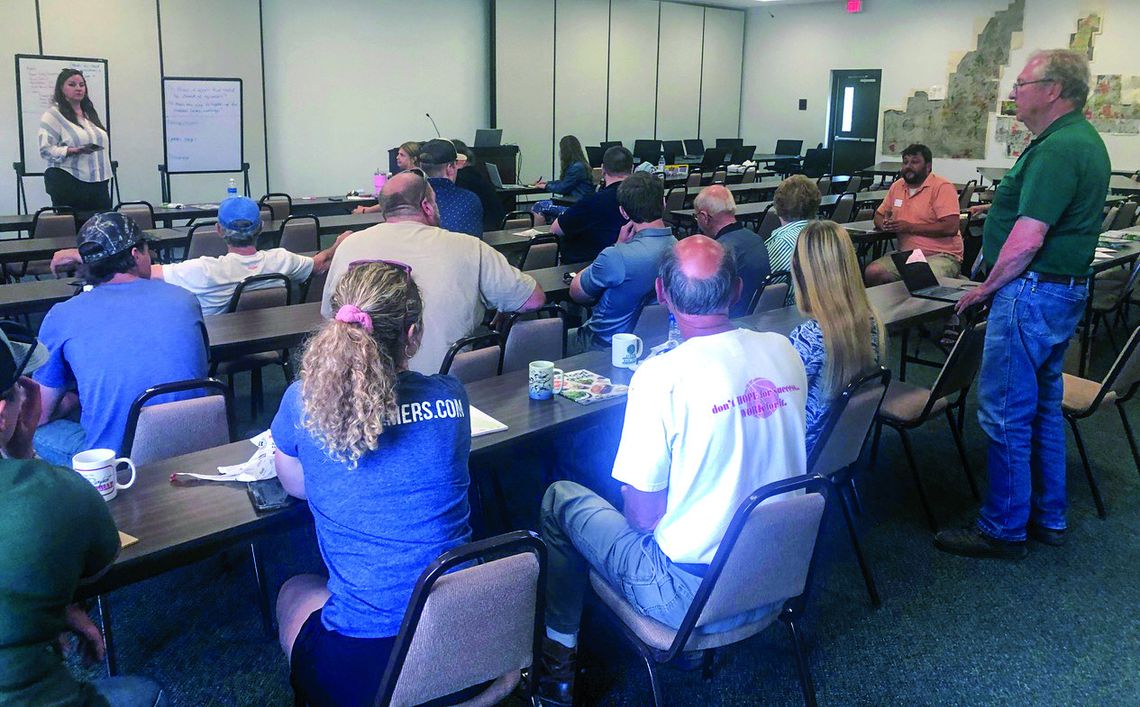Growers are talking, asserting and hoping to turn around their industry through a loose-knit group going by the name of the Cherry Grower Alliance.
Twenty-two people met Monday at the Northwest Michigan Horticultural Research Station, with about two thirds of attendees cherry farmers or employed by them. Most of the discussion centered on providing direction for the Cherry Industry Administrative Board (CIAB), which today is expected to set a marketing order requiring growers to not deliver a portion of their crop to markets.
The question of how much of the crop should be kept off grocery shelves occupied much of the meeting — as did the lingering question of whether the marketing order has helped the industry.
The consensus was that the marketing order can help. The group recommended that 10% of what is expected to be a much larger crop than the 2023 harvest be diverted. Also, another 20% of tart cherries should be “restricted” — that is held in reserve by processors, used for exempted purposes such as exports or new products, or diverted.
The elusive goal of the CIAB has always been to balance U.S. tart cherry consumption with the domestic harvest. However, cherries imported mostly from Eastern European nations, especially in juice form, are playing havoc with what had been a closed formula measuring supply and demand.
Cherry growers are clearly frustrated and worried. While the first alliance meeting held in March attracted 60 growers, attendance has waned partly due to demands of the growing season.
But there is more at play. “I think for a lot of them, they don’t think it’s moving fast enough,” said Suttons Bay Township grower Kurt Eckerle.
Leisa Eckerle Hawkins, owner of the Benjamin Twiggs retail store in Traverse City, is organizing the gatherings with the intent of giving growers a louder voice in setting commodity prices. While a 2022 MSU Extension study put the cost of growing tart cherries in Michigan at 40-44 cents a pound, prices have averaged less than half that amount in recent years. Crop failure in various levels caused the exceptions.
Consequently some growers are uprooting tart cherry orchards rather than continue to lose money. Sweet cherries, in general, have been less impacted by early frosts and fetching a higher per-pound rate.
Brian Mitchell, whose family has been cherry farming in Leelanau Township since the 1970s, said the industry has to change while holding onto its markets. He’s wary of producing too small of a crop, which might increase per-pound prices one year but turn processing companies to alternative product sources such as imported cherries or even different specialty fruits.
But the CIAB erred in 2023 when setting a 3% diversion, Mitchell said, which helped to carry over about 100 million pounds of stored cherries into the 2024 harvest.
“Putting 3% on the ground last year was not as aggressive as we should be. There has to be a price at which we ask, ‘Why are we delivering these things?’” he said.
Later he added, “If you go too far, you cut off the hand that isn’t feeding you much.”
Other farmers questioned if the rules of diversion are being implemented fairly to all operations.
Hawkins grew up in the cherry business. Her father, Jim Hawkins, runs a receiving plant in Suttons Bay Township and was in attendance. She hired facilitator Shea Petaja to run the meeting in a way to draw responses from normally tightlipped farmers.
For Hawkins, the sessions represent building blocks to sustain an industry during tough times and eventually turn its fortunes around. Future sessions are planned to hear from U.S. Senate and House candidates, set a basement price of 19 cents a pound for tart cherries that growers can count on, and bring together growers and processors. “We’re all in it for the same reasons. We’re not going to attack anybody. We want to make money, and we want to remain farmers,” Hawkins said of the processor meeting.
While the end goal might be financial, the immediate need is to provide an avenue for cherry growers to positively impact an occupation they love.
“It’s very much about providing a unified voice. Because without a unified voice, we can’t make change,” Hawkins said.








